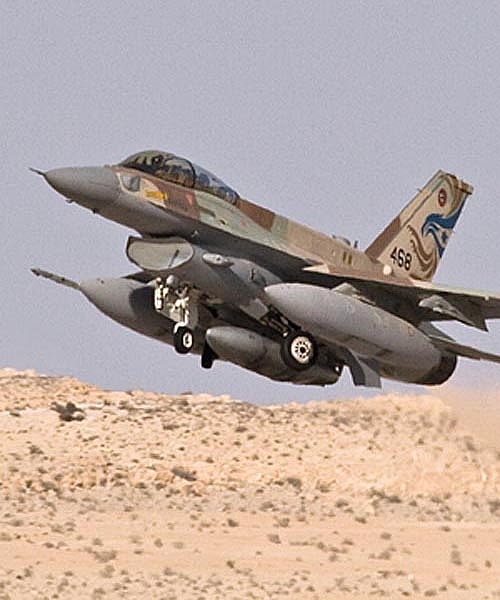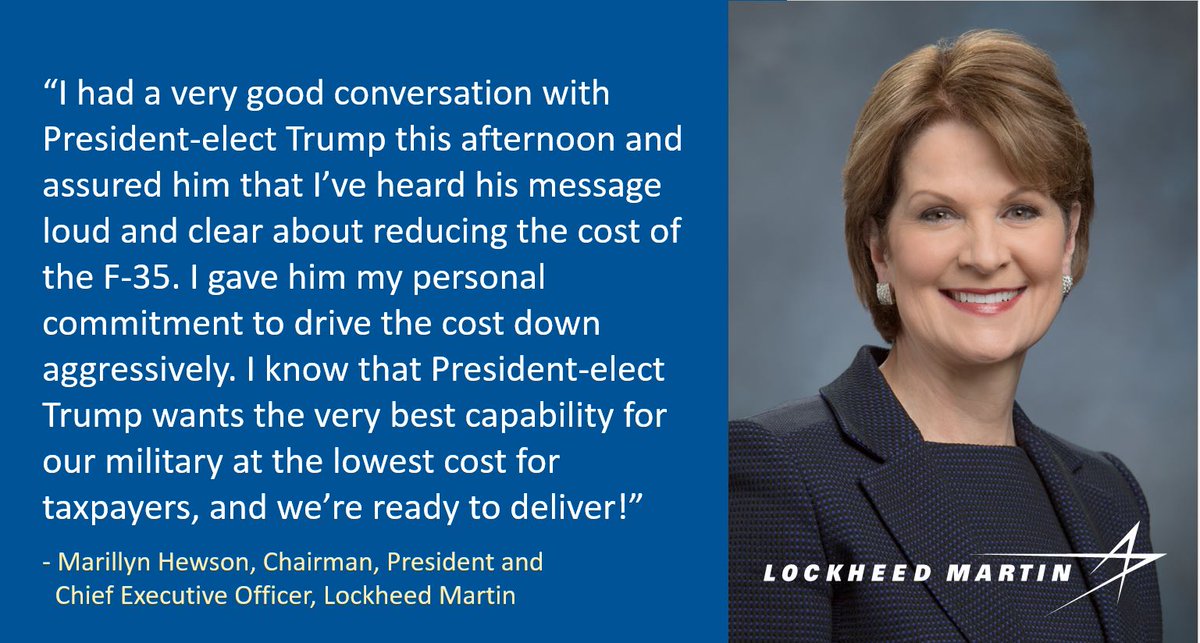:sigh:Neshant wrote:Spending a fraction of the funds spent developing the JSF on upgrading the F-16 and F-18 in their fleet would have been a much better investment compared to the the over 1+ trillion dollars spent on the JSF.
1. The R&D cost of the F-35 is $60 bn. Comparable to the F-22 after inflation. No one has 'spent' $1 trillion on it.
2. Unit acquisition cost is about $150 mil (incl. all variants). Flyaway cost for the F-35A is currently $95 mil which will fall to <$85 mil by 2019.
3. Its been thoroughly dominating the F-16s & F-18s in training exercises.
----------------------------------------------------------------------------------------Right now we're seeing no problems with that airplane. What we're seeing is high readiness rates and incredible capability. We just ran a WTI drill, a normal scenario we would have with our legacy aircraft out there. I was the CO of that weapons school. Generally about half the aircraft that go across into the high end threat... Prowlers, Hornets, Harriers and generally about half of the 30 airplanes don't make it through. The F-35 [got a] 24-0 kill ratio and killed all the targets. It was like Jurassic Park.. watching a velociraptor. It kills everything. It does really well so we can't get that aircraft fast enough into the fleet.
- Lt. Gen. Jon M. Davis, Deputy Commandant for Aviation, U.S. Marine Corps
The F-35 is so stealthy, it produced training challenges, pilot says
----------------------------------------------------------------------------------------During a recent exercise at Mountain Home Air Force Base, Idaho, F-35 squadrons wanted to practice evading surface-to-air threats. There was just one problem: No one on the ground could track the plane. “If they never saw us, they couldn’t target us,” said Lt. Col. George Watkins, the commander of the 34th Fighter Squadron at Hill Air Force Base, Utah.
The F-35s resorted to flipping on their transponders, used for FAA identification, so that simulated anti-air weapons could track the planes, Watkins said. “We basically told them where we were at and said, ‘Hey, try to shoot at us,’ ” he said, adding that without the transponders on, “most likely we would not have suffered a single loss from any SAM threats while we were training at Mountain Home.”
.
.
“When we go to train, it’s really an unfair fight for the guys who are simulating the adversaries,” Watkins continued. “We’ve been amazed by what we can do when we go up against fourth-gen adversaries in our training environment, in the air and on the ground.”
Watkins said he can take four F-35s and “be everywhere and nowhere at the same time because we can cover so much ground with our sensors, so much ground and so much airspace. And the F-15s or F-16s, or whoever is simulating an adversary or red air threat, they have no idea where we’re at and they can’t see us and they can’t target us.”
“That’s a pretty awesome feeling when you’re going out to train for combat,” Watkins concluded, "to know that your pilots are in an unfair fight.”
F-35 Unscathed by Hostile Fire in Green Flag
----------------------------------------------------------------------------------------Not a single F-35 was “shot down” during the joint-force Green Flag exercises testing the jet and its pilots’ prowess operating it in a contested air-support role in the Western U.S. this month, according to U.S. Air Force Lt. Col. Cameron Dadgar, head of the exercise and leader of the 549th Combat Training Sqdn. at Nellis AFB, Nevada.
This is notable because A-10s and F-16s were defeated in the same conditions, operating in an environment with hostile aircraft and surface-to-air missiles, he said.
Lockheed F-35 jets ace exercises as U.S. readies for combat use
----------------------------------------------------------------------------------------"When we actually have the airplane out there ... and people realize how much of a leap in technology it is, then and only then will people start to realize that all the time and energy put into it is really worth it," Bogdan said in an interview.
He said the jets' performance in exercises like Red Flag showed that onboard radar sensors and electronic warfare equipment would give them a huge edge in future wars. While one-third to one-half of other aircraft would routinely be "killed" during tough exercises, no F-35s had been downed, he said.
F-35B Tactics Evolving As Pilots’ Understanding Of Technology Matures
Last summer, as a last step before recommending an IOC declaration, Davis tasked the first F-35B squadron with completing an operational readiness inspection – a test event borrowed from the Brits, he said. As part of the test, Marine Fighter Attack Squadron (VMFA) 121 performed an armed reconnaissance mission that can sometimes take AV-8B Harrier and F-18 Hornet pilots all day to complete. “These guys went out there and they found all the targets very quickly and killed all the targets,” he said, noting the early proficiency of the squadron. “Most importantly, … we put a radar [surface-to-air missile] out in the objective area. In the old days we’d have to go take care of the radar SAM, get somebody in to go take care of that because you don’t do armed reconnaissance, which is patrolling for targets out there, unless you’ve got a permissive threat environment and you beat that threat. These guys went out with the SAM in the area and did that and they killed the SAM.” Fast forward a year, he said, and the squadron has gone from proficient to innovative. Davis brought Marine Corps Commandant Gen. Robert Neller to meet the pilots and learn about the planes and tactics. During the visit, the squadron was assigned two drills.
The first was done with fewer planes than Davis thought was needed, but otherwise went according to plan. He said the pilots were given a scenario that was “very high-end, off the ship, go into the jaws of death, double-digit SAMs, fighter threat, and go after a very strategic target on the ground. I watched them do it as a foursome, which normally I would say it would be 13 or 14 airplanes normally, what I would do as [commanding officer] of the weapons school, which I was. … They killed the fighters, they killed the SAMs, they killed the target, they came home. “What was most interesting to be was not what they did but how they did it. It was very much the maturation of the pilots and how they’re flying this airplane, how they’re using information, communicating with each other, sharing information,” he continued. “It was more like watching a pack of dogs go after something. And it was force-on-force, it wasn’t scripted,” so their success – particularly with so few aircraft – was far from guaranteed.
The second drill, though, did not go as planned – in the best possible way, Davis said. The planes were to fly a close-air support mission through clouds at 1,000 feet, with the planes in the 3F configuration that allows for pylons to externally carry 18,000 pounds of bombs. “I’m out there, the commandant of the Marine Corps is out there, I want to impress the commandant,” Davis said. “This first scenario was awesome, and then right before the second scenario I said, are we ready to go? And this young major comes up … he goes, ‘we’re not going to do exactly what you want us to do.’ I’m like [eyes grow wide]. “Because we didn’t think the tasking was challenging enough. So we’ve got two that are slick and two that are loaded up as bomb trucks. We can do the job sir, don’t worry.’” So two planes forfeited their external carry capacity in exchange for stealth, and “it was a work of art,” Davis said. The planes hit all their targets in five and a half minutes, with the four planes passing images through the clouds and successfully taking out the missile threat early on. “I just watched, I’m like, that’s not how my brain works, but that is the way their brains are working,” he said. “Gen.(Charles) Krulak, who I used to work for, said ‘you don’t man the equipment, you equip the man,’ so we’re equipping these young Marines, this generation that doesn’t know any bounds for latitude for technology, and they’re leveraging this technology and doing great things.”
















